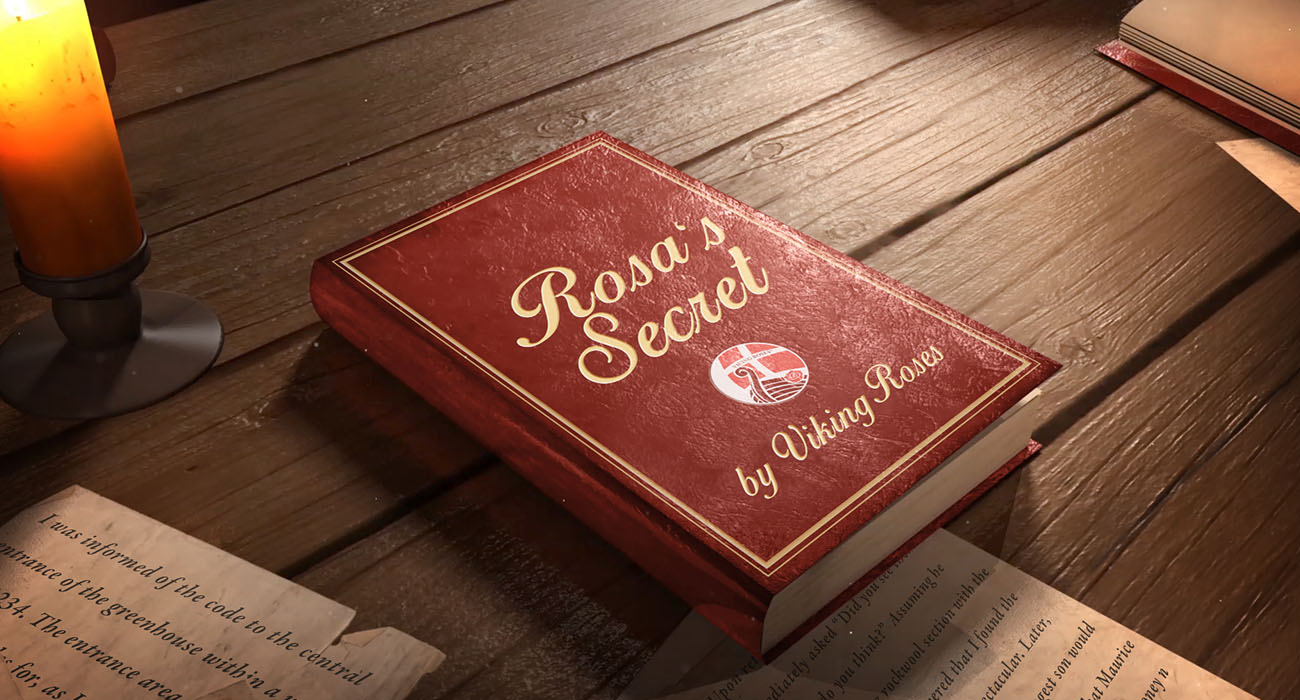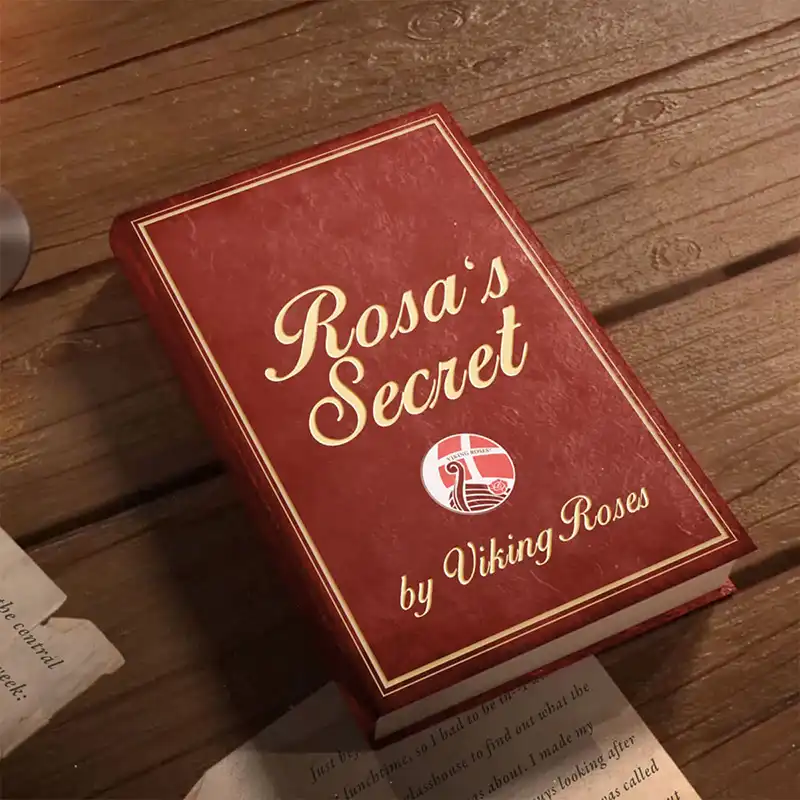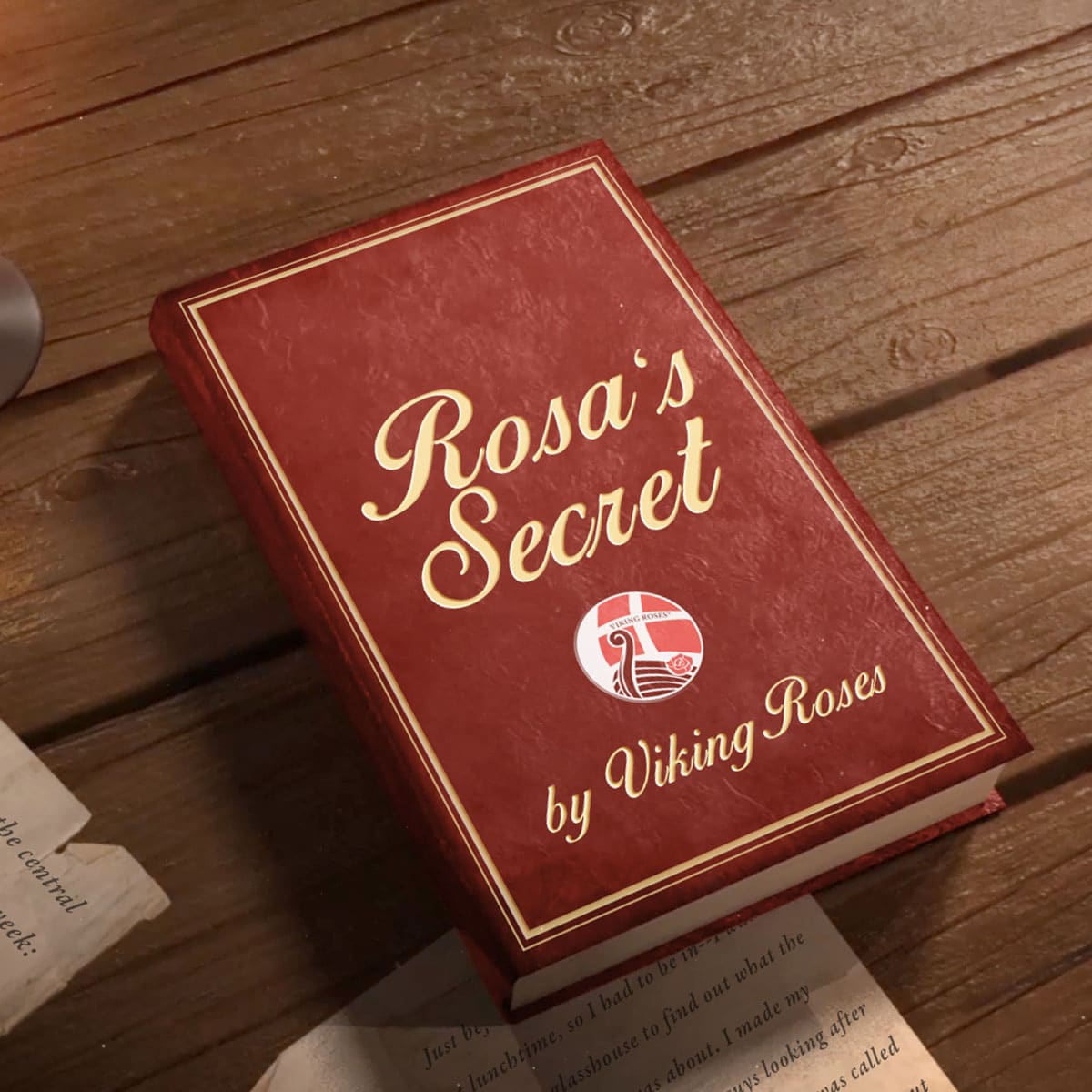Most of the developed photographs of WITTOVINGT were of no use, but the ones for which I had used the ‘automatic’ camera settings were reasonable. Father Dré’s “good enough” was a relief. Trying to learn as much as possible about the magical world I now was part of, I regularly made a round through the greenhouse to learn the mysteries of breeding and had coffee with the boys in their canteen. In fact, this was a corner of the shed where they would pack rose bushes, an old table and an assortment of discarded chairs and a couch. Typical of the Boskoop area, this was: a nice house for the owner at the head of the property and a shack for the personnel, further down. I learnt the nicknames, ‘Hano’, ‘Peli’, ‘Banaan’, customary for regulars of the local bar, organizing costume-theme parties: Après-ski in the middle of summer, Bacardi-Beach in the middle of winter. Ben and Alex didn’t follow this tradition and the latter, I was thrilled to find out, was an amateur photographer. Relieved I decided that, in due course, he would be my savior.
I also learnt that Seedy understood the “not now” to avoid his endless sermons on any topic, if, at times, you would dare enter a discussion, usually on Friday afternoons, visiting his tunnel. During his holidays in France, he had started to visit and plunder old rosaries and would show me these plants, struggling to stay alive in the Dutch climate, fighting weeds and dying, sometimes literally, for fertilizers and pesticides. He was particularly proud of some varieties he picked up from the garden of a castle in Amboise, hoping they would flower soon.
One of his loved topics was “easy breeding”. “Visit a breeder’s trials, like Svend Egele’s, take some of the codes, apply for PBR and you’re in.” I had told him about missing varieties after my trip to Denmark with Father Dré. “A breeder can never prove it’s their variety and, besides, there are so many very similar varieties. Just look at Total Success® and Perlala®.” He had a point, but the breeders I had met all treated each other and each other’s varieties very respectfully. Stealing a variety would be a deadly sin.
At the time, Von Bismarck was the most successful rose breeder with their small and medium sized varieties Audi®, Bentley®, Salsa®, Icy® and many others and before that, Groupe Ferry occupied the throne with their hybrid teas Cabbara®, Sonja® and Delicat®. The persons in the company that actually bred those varieties were protected and cherished. Someday, they would come up with a new generation of winners. Witte de Wit’s Eva®, Leonardo® and the co-owned Icon® were the leading Hybrid teas in Holland. Father Dré, however, did not match the image of the eccentric, devoted artist that lived and died for his seedlings. Still, he had been very successful. What, then, decides on the success of a breeding company? Most breeders seemed to believe the key was the individual that decided on the crossings. But, looking at the way Father Dré put together his program and asking Dré Junior how this went in the past, the success of Witte de Wit must have been a stroke of sheer luck. But then, a stroke of luck is always single, and Witte de Wit was successful in hybrid teas and miniatures.
Red was fifty per cent of the Mediterranean and Latin markets. Von Bismarck held the first with their Orleans® and the French breeder Lebrun the second with Madame Lebrun®. But Lebrun struggled. Colombia and Ecuador had not become members of UPOV, growers indulged in propagation without paying royalties. Breeders would call this ‘illegal’ and ‘piracy’, but with the lack of legislation, the growers concerned could only be persuaded to cooperate on moral grounds. Lebrun tried suing in America, which had a proper legislation and where all the flowers went, but no court decision was ever taken. On top of this, the apparently identical Carola® was launched by an Israeli company at half the royalty rate. Lebrun was lucky that the Colombians and Israelis did not see any use in Lebrun’s garden and fruit varieties.
Holland was considered the most important market. Not in size, because at the time the Mediterranean area and Latin America had more hectares of roses, but in preparedness to pay royalties and pay in time, it was. Moreover, because of its auction system in the marketing of the flowers, Holland was trendsetting. Prices were decided before the clocks six and later five days per week, with the whole world watching. If the prices of their varieties were good, breeders would fax these to their clients around the globe every week, thus stimulating sales.
Hence the orange-red Eva® was the target variety for all breeders, including Witte de Wit, as the variety had already been out for seven years. There were no promising reds in our own codes and therefore our hopes were on the breeders we represented in Holland, being LAVAL only. Sjef realized our weakness. As Klaus Seedy would need some five years to adopt the existing and add his own breeding lines, Sjef told us to seek other agencies. We acquired the varieties of a Belgian research station, but this was no serious player. Secret discussions with Jackson & Perkins were started. It was ‘not done’ in the breeding industry to change agents. Breeders had represented each other for generations. In the end, Jackson & Perkins became our agents for North and South America and we theirs for the Benelux. Although Hendrik Jacobszoon and Stan Gidley were personally informed, this caused serious unrest in the industry, with colleagues that refused to speak with us for years and others, mainly those with a shorter history, who disapproved of but tolerated the change.
Two years ago, Big Anton and Father Dré had made the same selection round through Monsieur Schmidt’s codes. Anton had drawn Father Dré to the dark red code with the beautiful shiny leaves. “Do you think that in Holland we could grow it with a longer stem, Dré?” By origin, Anton was a rose grower. He was the first to grow Sonja® and even when he had moved into pot plants, he continued to be attracted to the queen of flowers. He had also picked out Eva®, full of mildew at the Witte de Wit place, but did not plant it at the time as he had just started with the potroses. Since then, one of the sections of his nursery was rented out to Witte de Wit as showcase, and the plants were looked after by Piet Lek, his former cut rose foreman. Here, Leonardo® was picked up by the ‘three kings’. Here, the stem length of the red code was indeed increased with the right climate and fertilizers. Its productivity remained doubtful, but still Anton persuaded two old friends to plant it. It was baptized “Premier Rouge®” by LAVAL.
From the vase life tests in Benthuizen it showed, that it was essential to cut the flower at auction ‘cut stage 2’. Father Dré included this in the cultivation contracts with the growers. The first flowers did well at the Aalsmeer clock, receiving good prices. One of the growers had then called to Uncle Piet several times to cross the opening stage clause from the contract. “The Zurel buyer has now called me five times offering to pay 25 cents more for stage 1.” Sjef agreed with the grower. Still, not to disappoint Father Dré and Uncle Piet too much, he decided not to change the license, but if this would prevent additional sales of the variety, it would be taken out.
At the same time, Sjef decided to break a series of breeders’ ‘codes’, codes of conduct. WITTOVINGT, a first-year seedling from a crossing of two Von Bismarck varieties was introduced without further testing, thus beating Von Bismarck’s Perlala® which came out half a year later. Also, this was ‘not done’. Breeders would not add each other’s varieties to their breeding programs until a year after the commercial introduction. At the same time, he decided to name the variety ‘Total Success®’, to which the German colleague Rosen Vorbeck reacted in writing: since a number of their roses held ‘-ess’, such as Princess® and Gentleness®, Witte de Wit should abandon the chosen name. “Dré, can they legally do anything against us?”, Sjef asked. “Legally, no” was the first part of the reply that was broken off. “Good, fuck’m.”
Total Success® turned out to fit nicely in the Witte de Wit line of varieties that opened and lasted in the house. This was the first instruction that Seedy received for the cut roses. Consequently, the vase life room soon became too small for the ‘consumer stress test’ that Seedy developed after endless discussions with the quality managers of the two leading flower auctions, VBA in Aalsmeer and BVH in Naaldwijk, imitating conditions at home rather than copying the standardized ‘auction testing conditions’ that were optimal for the flower, with controlled non-fluctuating temperature, light and dark and air humidity. Seedy’s test involved temperature and humidity fluctuations, direct sunlight, wind, dirty vases and dirty water.
In the meantime, I had studied the workings of the auctions, which dominated the word of flowers and plants. Their clocks were apparently unpredictable yet powerful price-setting instruments, but also decisive for the success or failure of a new variety. Sjef would be at the Aalsmeer rose clock once a week at 6 a.m., when the arms started to turn. He knew some of the flower buyers from the annual thirst-driven, dung-slinging 3-day fair in the village of De Kwakel and before long we had them set high launching prices for our introductions. Soon the competition would copy and we would have to find other gimmicks to create the launching momentum for our novelties.
I also discovered, that in the second or third week after the introduction, some buyers from the smaller Rijnburg auction would buy just once or twice, at good prices. The buyers at this auction were basically ‘lijnrijders’, flower cowboys who would fill their trucks with flowers, drive east, sell and return when they were sold-out. But the novelties would not be trucked by these travelling sellers, but flown to propagators in Israel and Morocco and growers in Brazil. Of course, we would never receive any royalties from this and there seemed to be nothing we could do about this.
The auctions were cooperatives owned by the Dutch growers, just like the dairy factories in the north by the farmers and the vegetable auction in the Westland by big producers of specifically cucumbers, peppers and tomatoes. Somehow the ornamental auctions were in fierce competition on anything, but seemed to copy each other all the time, especially in standardization, a truly Dutch phenomenon. Flying into Schiphol airport you can see that the Dutch have an obsession in pigeonholing, thinking in boxes, categorizing to the extreme. ‘Cut stages 1, 2 and 3’; ‘A and B qualities’; ‘Big headed’ and ‘small headed’, the first with an open flower head size from 10.5 cm and the latter up to 10.5 cm.
I had started to fax the top-10 auction varieties to our agents, for them to use to persuade their growers to plant a Witte de Wit. With Eva®, Icon® and Leonardo® we were very visible in the big heads. Von Bismarck dominated the small heads and it would be hard to make Total Success® visible in this way, since the quantities of small heads were much larger. When we had to send in samples for the auction-head size-categorizing I brought out my measuring tape to the showcase and with the help of Piet Lek we found some flowers with head size 10.6cm and a little higher. The auction bureaucrats protested, but in the end could not but accept Total Success® as a big head, soon to appear in the top 10. Thinking outside the box.
A year later a new category was added: intermediates.





